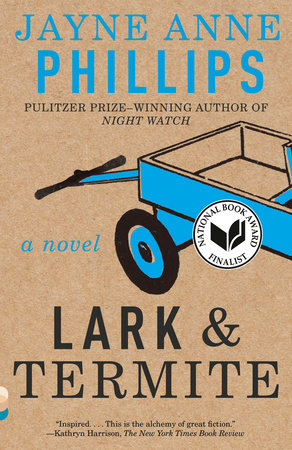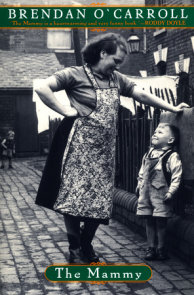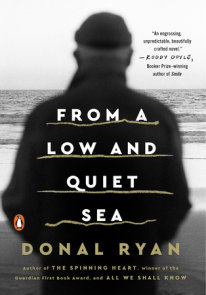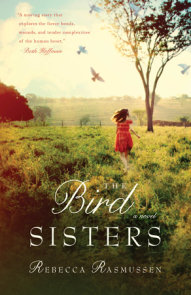READERS GUIDE
“Powerful and emotionally piercing. . . . A novel that conjures with goetic ferocity the . . . unconscious almost magical bonds shared by people who are connected by blood or love or memory.” —The New York TimesThe introduction, questions, and suggestions for further reading that follow are intended to enhance your reading group’s discussion of Jayne Anne Phillips’s richly layered new novel, Lark and Termite.
Introduction
A glowing, wonderfully alive novel from one of our most admired and best-loved writers, her first book in nine years. Lark and Termite is set during the 1950s in West Virginia and Korea. It is a story of the power of loss and love, the echoing ramifications of war, family secrets, dreams and ghosts, and the unseen, almost magical bonds that unite and sustain us.At its center, two children: Lark, on the verge of adulthood, and her brother, Termite, a child unable to walk and talk but filled with radiance. Around them, their mother, Lola, a haunting but absent presence; their aunt Nonie, a matronly, vibrant woman in her fifties, who raises them; and Termite’s father, Corporal Robert Leavitt, who finds himself caught up in the chaotic early months of the Korean War.
Told with deep feeling, the novel invites us to enter into the hearts and thoughts of the leading characters, even into Termite’s intricate, shuttered consciousness. We are with Leavitt, trapped by friendly fire alongside the Korean children he tries to rescue. We see Lark’s dreams for Termite and her own future, and how, with the aid of a childhood love and a spectral social worker, she makes them happen. We learn of Lola’s love for her soldier husband and her children, and unravel the mystery of her relationship with Nonie. We discover the lasting connections between past and future on the night the town experiences an overwhelming flood, and we follow Lark and Termite as their lives are changed forever.
Questions and Topics for Discussion
1. Have you read any of Jayne Anne Phillips’s other books? If so, in what ways is Lark and Termite similar to her earlier work, and how is it different?
2. Reread the quotations in the epigraph. Now that you’ve read the novel, what does each one mean to you?
3. On page 6, Leavitt thinks, “The war makes ghosts of them all.” In what ways does this prove true? Which ghosts are literal, and which metaphorical?
4. Who is the strongest person in the novel? The weakest?
5. Mothers, and substitute mothers, play a substantial role in the novel. What do you think Jayne Anne Phillips is trying to say about motherhood?
6. Compare and contrast the sibling relationships in the novel: Lark and Termite, Nonie and Lola, and the nameless Korean pair.
7. Discuss the sense of sound as it relates to each of the main characters. In what ways does sound function differently for Termite than for Nonie or Lark? What about Leavitt and Lola? What does the sense of sound say about the importance of language?
8. Two different tunnels are the settings for major developments in the novel. What do they signify?
9. On page 27, Lola says of Lark, “I gave her a bird’s name. Maybe she’ll grow up safe and fly away.” And on page 37 Lark discusses Termite’s nickname: “I think he’s in himself like a termite’s in a wall.” What other names in the novel carry metaphorical weight?
10. Why does Charlie take care of Lola? What about Onslow?
11. “Termite can only tell the truth,” Lark says on page 94. Who else tells the truth? Who lies? What are the ramifications?
12. What role does Solly play? What about his father, Nick?
13. Throughout the novel, we revisit events from different perspectives. How do the multiple takes change your understanding of what’s happening?
14. On page 158, Lark says, “It’s almost as though Stamble and Termite are related versions of something, but Stamble walks around in the world and Termite doesn’t.” Who is Robert Stamble? Why does Lark see him?
15. Where do you think Termite’s new wheelchair really came from?
16. Discuss the flood. How is each character’s life affected?
17. Reread and discuss the final Termite passages, on pages 276-277. What is revealed there?
18. Does the novel have a happy ending?
(For a complete list of available reading group guides, and to sign up for the Reading Group Center enewsletter, visit www.readinggroupcenter.com)






















